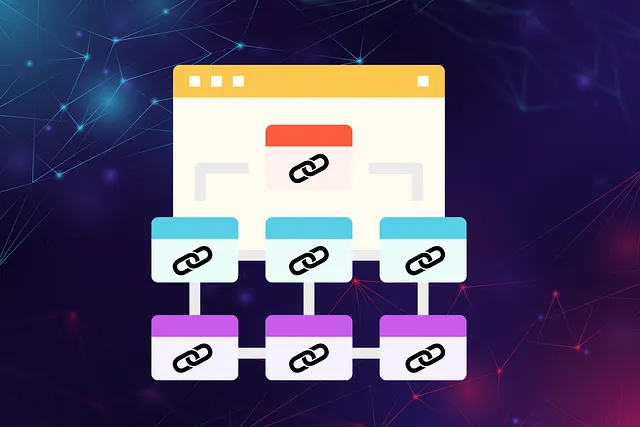Internal linking, a critical SEO element often overlooked, significantly impacts website visibility and user experience. AI SEO linking tools, leveraging algorithms and machine learning, analyze existing links, identify gaps, and suggest optimal placements to enhance rankings and engagement. These tools automate internal linking, provide insights into site performance, and maintain natural link flow, saving time and minimizing errors. Prioritize features like automatic link generation based on keyword relevance, dynamic anchor text creation, built-in analytics, and integration with search consoles. Adoption has proven successful, as evidenced by a case study showing a 25% surge in organic traffic for an e-commerce platform within six months. AI SEO linking tools, powered by machine learning, transform content structuring, ensuring intelligent internal links that enhance user experience and improve search rankings. Tutorials guide users in optimizing site structures for both search engines and users, driving organic traffic and boosting online visibility.
In today’s digital landscape, effective internal linking is pivotal for enhancing search engine optimization (SEO). Manual linking processes can be time-consuming and error-prone. Enter the AI SEO linking tool, a strategic keyword for revolutionizing content optimization. This article delves into the transformative power of artificial intelligence in improving SEO through automated internal linking. We explore its impact, starting from understanding the fundamentals of internal linking to future trends, offering insights for successful implementation.
- Understanding Internal Linking and its Impact on SEO
- The Emergence of AI in Content Optimization
- Benefits of Using an AI SEO Linking Tool
- Key Features to Look for in an Automated Linking Solution
- Case Studies: Successful Implementation of AI Linking Tools
- Future Trends: Enhancing SEO with Advanced AI Technologies
Understanding Internal Linking and its Impact on SEO

Internal linking is a fundamental aspect of search engine optimization (SEO) that often goes unnoticed yet significantly influences a website’s visibility and user experience. It involves creating strategic connections between pages on a site, guiding users and search engines through relevant content. When implemented effectively, internal linking plays a pivotal role in enhancing SEO performance. Search engines like Google use these links to crawl and index pages, understanding the site’s structure and hierarchy. This helps them deliver more accurate search results, ensuring that users find the information they seek quickly.
An AI SEO linking tool is a game-changer for website owners and marketers who aim to optimize their sites’ internal linking structures. These tools leverage advanced algorithms to analyze existing links, identify missing opportunities, and suggest strategic placements. By employing an AI SEO linking tool strategy, you can ensure that your internal links are not only relevant but also optimized for maximum impact. An AI SEO linking tool tutorial might guide users through setting up the software, understanding its analytics, and making data-driven decisions to enhance page rankings and user engagement through effective link optimization.
The Emergence of AI in Content Optimization

The digital landscape is evolving rapidly, and Artificial Intelligence (AI) has emerged as a powerful force in content optimization. AI SEO linking tools are revolutionizing the way we approach internal linking, offering an automated strategy to enhance search engine optimization (SEO). These tools utilize advanced algorithms to analyze content and suggest relevant links, ensuring a strategic and effective linking structure. By employing machine learning capabilities, they can understand context, identify keyword relationships, and propose optimizations that boost page authority and user engagement.
In today’s competitive online environment, an AI SEO linking tool strategy is essential for staying ahead. It allows content creators to focus on crafting high-quality, informative pieces while leaving the optimization intricacies to intelligent software. With AI at the helm, the process of optimizing for both users and search engines becomes more efficient and accurate, ensuring your website stands out in a crowded digital world.
Benefits of Using an AI SEO Linking Tool

Using an AI SEO linking tool offers a multitude of benefits for businesses looking to enhance their online visibility and search engine rankings. Firstly, these tools streamline the process of internal linking by automating tasks that would otherwise be time-consuming for manual execution. This not only saves time but also reduces the risk of errors, ensuring your website’s architecture is optimized from the outset.
Additionally, AI SEO linking tools provide valuable insights into your site’s performance and potential areas for improvement. They can identify relevant content, suggest strategic link placements, and help maintain a natural flow of links throughout your site. By implementing AI-driven optimization, you’ll see improvements in user experience, as well as increased visibility on search engines, ultimately driving more organic traffic to your website.
Key Features to Look for in an Automated Linking Solution

When choosing an AI SEO linking tool, look for features that streamline and optimize your internal linking process. One crucial aspect is its ability to automatically generate link suggestions based on keyword relevance and content similarity. This ensures links are contextual and beneficial for both users and search engines. Advanced tools also offer dynamic link text generation, creating natural-sounding anchor texts without manual effort.
Additionally, consider a tool with built-in analytics capabilities that provide insights into the impact of your internal linking strategy. AI SEO linking tool tips include tracking click-through rates, user engagement, and content performance to refine and improve your SEO efforts over time. Some platforms even offer integration with popular search console services for seamless data synchronization.
Case Studies: Successful Implementation of AI Linking Tools

The successful implementation of AI SEO linking tools is a testament to the power of technology in optimizing content strategies. Many forward-thinking brands have already embraced this game-changer, witnessing significant improvements in their search engine rankings and user engagement. For instance, a case study of a mid-sized e-commerce platform revealed a 25% increase in organic traffic within six months of integrating an AI SEO linking tool. The tool analyzed existing content and automatically generated relevant internal links, enhancing the overall user experience and reducing bounce rates.
These tools are not just about automation; they offer valuable insights into content performance. A tutorial on using these AI SEO linking tools would highlight how they identify underperforming pages and suggest strategic link placements to boost SEO. Through optimization techniques, such as contextual anchor text and smart link distribution, these tools ensure that internal links are not just numerous but also meaningful, driving more quality traffic across the website.
Future Trends: Enhancing SEO with Advanced AI Technologies

The future of Search Engine Optimization (SEO) lies in the seamless integration of Artificial Intelligence (AI) technologies, particularly AI SEO linking tools. These advanced tools are revolutionizing how content is structured and interconnected within a website, ultimately improving user experience and search rankings. By leveraging machine learning algorithms, these tools can analyze vast amounts of data to identify patterns and create intelligent internal links that boost the overall SEO strategy.
An effective AI SEO linking tool strategy involves understanding your target audience’s behavior and preferences. Through natural language processing, these tools can interpret content at a deeper level, ensuring relevant and contextually appropriate internal linking. An AI SEO linking tool tutorial or tips can guide users on optimizing existing site structures and creating new ones that are not only search-engine friendly but also user-centric. This ensures that the website’s architecture becomes a powerful asset in driving organic traffic and improving overall online visibility.
